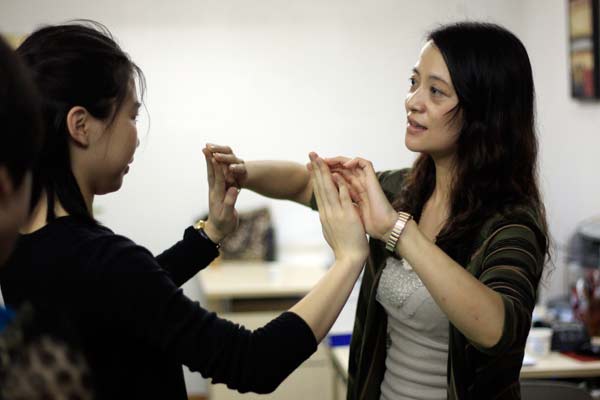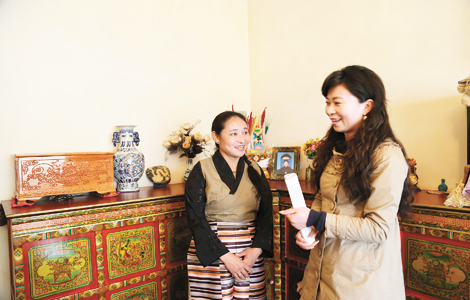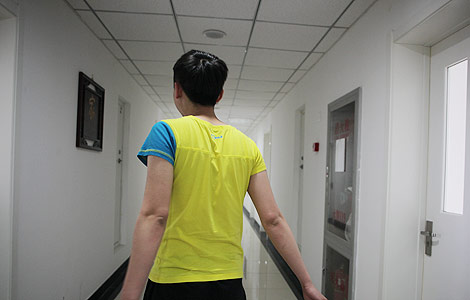Dance becomes popular stress relief
Updated: 2013-06-28 02:42
By XU JINGXI in Guangzhou (China Daily)
|
|||||||||||
|
 |
|
Wang Yuchi (right), a dance therapist in Guangzhou, shows participants at her workshop how to relax with the help of the special finger dance. Zou Zhongpin / China Daily |
In the Oscar-winning movie Silver Linings Playbook, Pat, a monomaniac who refuses to face the breakup with his ex-wife, and Tiffany, a widow whose life is a mess after her husband's death, heal their wounds by preparing for a dancing competition together.
They forget their troubles when they focus on practicing the jumps and lifts. They build up trust and love for each other with silent touches rather than flashy words.
Dancing turns out to be a miracle drug for the two mentally ill people.
And it also has become a trendy antidote to stress among young Chinese, especially urban female white-collar workers, in the past three years.
After a day of exhausting work, they go to "dance therapy" studios, which are usually in or near their cities' central business districts and thus not far from their offices; take off their high heels; and put on sportswear to learn about their own bodies so as to release the emotions locked in the shells.
Wang Yuchi is the first dance therapist in Guangzhou, capital of Guangdong province, and has been offering the service at the Sun Flower Counseling Center since 2010.
She has given dance therapy courses to about 50 people, each 10-week course carried out among a group of only five or six people.
A weekly class begins with participants relaxing their bodies by doing whatever movements they want to do. They are asked to put aside rational thinking and to just follow what they feel.
Then Wang will guide participants to observe and imitate each other's movements and share what they guess their teammates are feeling. "Remarks from others can help a self-restrained person to crack open the body to feel the emotions inside," Wang said.
Only when trust is built within a group will Wang start individual case studies. During a case study, the therapist designs movements for a particular participant to follow based on previous in-depth personal interviews in order to put the person in a situation similar to the one where he or she got the emotional scar.
The other members in the group surround their teammate to offer a sense of security, holding the person's hand when he or she gets too emotional and thus shakes and tumbles. They also listen to the person baring the old wound.
"The team's support is vital for dance therapy's effect," Wang said. "I shut down newcomers outside a group. Otherwise it will harm the trust within the group. And I will suspend the class if any member is absent."
Related Stories
Nations linked by dance 2013-06-03 13:55
It's lunchtime, let's dance 2013-05-19 07:33
Dancing to a fresh beat 2013-04-19 11:10
Advice for seniors about to take up pole dancing 2013-05-30 07:14
Pole dancing breaks out on subway in C China 2013-04-18 10:48
Dance between the lines 2013-03-08 07:33
Today's Top News
US Senate approves landmark immigration bill
Park's visit aids 'trust-building process'
Industry enjoys profitable month
EU budget deal sealed
IPOs likely to resume in H2
'No more illegal tax cuts for investors'
Shenzhen, Belgium to boost ties
Hiring index signals further job weakness
Hot Topics
Lunar probe , China growth forecasts, Emission rules get tougher, China seen through 'colored lens', International board,
Editor's Picks

|

|

|

|

|

|





